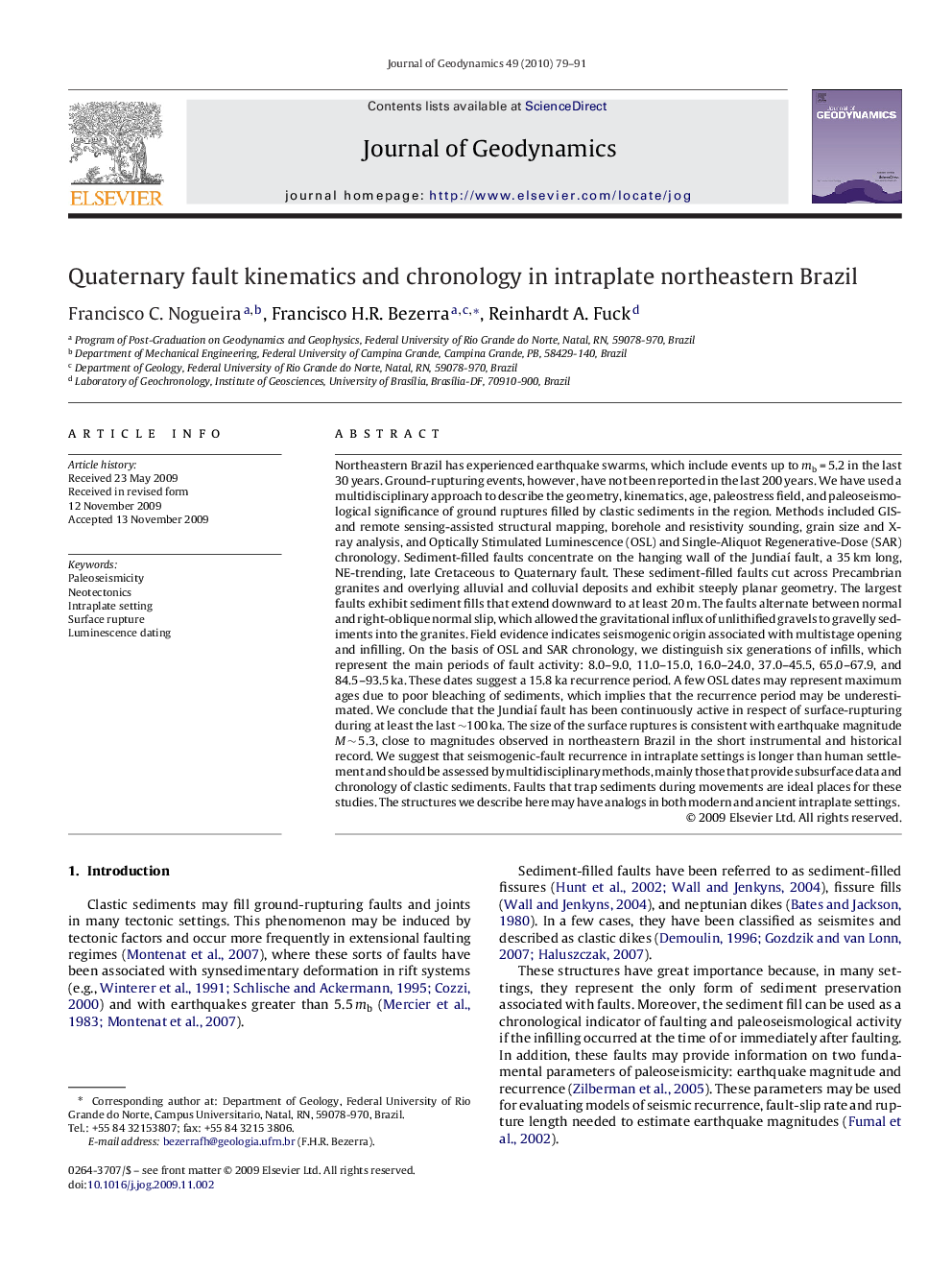| کد مقاله | کد نشریه | سال انتشار | مقاله انگلیسی | نسخه تمام متن |
|---|---|---|---|---|
| 4688547 | 1349854 | 2010 | 13 صفحه PDF | دانلود رایگان |

Northeastern Brazil has experienced earthquake swarms, which include events up to mb = 5.2 in the last 30 years. Ground-rupturing events, however, have not been reported in the last 200 years. We have used a multidisciplinary approach to describe the geometry, kinematics, age, paleostress field, and paleoseismological significance of ground ruptures filled by clastic sediments in the region. Methods included GIS- and remote sensing-assisted structural mapping, borehole and resistivity sounding, grain size and X-ray analysis, and Optically Stimulated Luminescence (OSL) and Single-Aliquot Regenerative-Dose (SAR) chronology. Sediment-filled faults concentrate on the hanging wall of the Jundiaí fault, a 35 km long, NE-trending, late Cretaceous to Quaternary fault. These sediment-filled faults cut across Precambrian granites and overlying alluvial and colluvial deposits and exhibit steeply planar geometry. The largest faults exhibit sediment fills that extend downward to at least 20 m. The faults alternate between normal and right-oblique normal slip, which allowed the gravitational influx of unlithified gravels to gravelly sediments into the granites. Field evidence indicates seismogenic origin associated with multistage opening and infilling. On the basis of OSL and SAR chronology, we distinguish six generations of infills, which represent the main periods of fault activity: 8.0–9.0, 11.0–15.0, 16.0–24.0, 37.0–45.5, 65.0–67.9, and 84.5–93.5 ka. These dates suggest a 15.8 ka recurrence period. A few OSL dates may represent maximum ages due to poor bleaching of sediments, which implies that the recurrence period may be underestimated. We conclude that the Jundiaí fault has been continuously active in respect of surface-rupturing during at least the last ∼100 ka. The size of the surface ruptures is consistent with earthquake magnitude M ∼ 5.3, close to magnitudes observed in northeastern Brazil in the short instrumental and historical record. We suggest that seismogenic-fault recurrence in intraplate settings is longer than human settlement and should be assessed by multidisciplinary methods, mainly those that provide subsurface data and chronology of clastic sediments. Faults that trap sediments during movements are ideal places for these studies. The structures we describe here may have analogs in both modern and ancient intraplate settings.
Journal: Journal of Geodynamics - Volume 49, Issue 2, March 2010, Pages 79–91